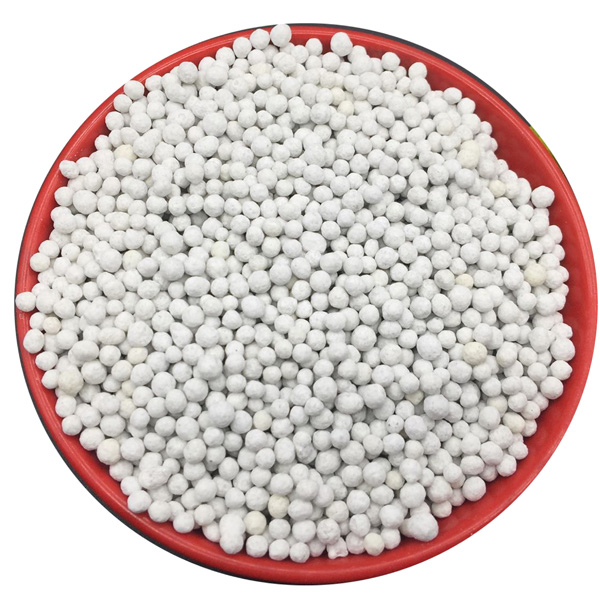
Oct . 13, 2024 21:10 Back to list
Nutrient-Rich 32% Fertilizer for Thriving Plants and Enhanced Growth
Understanding 32% Fertilizer An Essential Component for Modern Agriculture
Fertilization is a critical aspect of modern agriculture, affecting crop yield, soil health, and ultimately, food security. Among the various types of fertilizers available, 32% fertilizer stands out for its unique composition and wide application. But what exactly is 32% fertilizer, and how can farmers utilize it to maximize their agricultural outputs?
What is 32% Fertilizer?
32% fertilizer, commonly referred to as urea ammonium nitrate (UAN), is a liquid fertilizer that contains 32% nitrogen by weight. Nitrogen is a vital nutrient for plants, playing a key role in their growth and development. It contributes to the formation of proteins, amino acids, and chlorophyll – essential components for photosynthesis and energy production.
The UAN solution is a mixed fertilizer, which combines two forms of nitrogen urea and ammonium nitrate. This synergy allows plants to absorb nitrogen more efficiently, promoting lush growth and higher yields. The liquid form of this fertilizer also makes it easier to apply evenly across fields, reducing the risk of over-fertilization and nutrient loss.
Benefits of 32% Fertilizer
1. High Nitrogen Content As a source of nitrogen, 32% fertilizer is one of the most concentrated options available in the market. This allows farmers to apply fewer quantities while still achieving the necessary nutrient levels for optimal plant growth.
2. Versatile Application The liquid nature of UAN allows for various application methods, including foliar application, injection into the soil, and incorporation into irrigation systems (fertigation). This versatility enables farmers to choose the best approach depending on their crop type, growth stage, and soil conditions.
3. Improved Crop Yields Studies have shown that the use of 32% fertilizer can lead to significant increases in crop yields. By providing plants with a readily available source of nitrogen, farmers can ensure that their crops receive the nutrients they need to grow strong and healthy.
4. Enhances Soil Health Proper application of nitrogen fertilizers like UAN can improve soil structure and fertility over time. Healthy soil promotes better root development and water retention, creating a more sustainable agricultural system.
32 fertilizer

5. Cost-Effective The high nitrogen concentration in 32% fertilizer often translates to cost savings for farmers. With fewer applications needed compared to other nitrogen sources, farmers can reduce labor and transportation costs while maximizing their return on investment.
Considerations for Use
While 32% fertilizer offers many benefits, it is essential for farmers to apply it responsibly. Over-application of nitrogen can lead to nutrient runoff, which can harm local water bodies and ecosystems. Here are some best practices to consider
- Soil Testing Before applying any fertilizer, farmers should conduct soil tests to understand existing nutrient levels and determine the appropriate amount of nitrogen needed for optimal crop performance.
- Timing and Rates Application timing is crucial for achieving the best results. It is often recommended to apply nitrogen fertilizers during the crop’s active growth periods, ensuring that the plants can utilize the nutrients effectively.
- Environmental Impact Farmers should be aware of the potential environmental impacts of nitrogen fertilizers, including runoff and greenhouse gas emissions. Implementing best management practices can help mitigate these issues.
- Combine with Other Nutrients While nitrogen is essential, crops also require other nutrients, such as phosphorus and potassium. A balanced fertilization strategy should take all of these elements into account.
Conclusion
In conclusion, 32% fertilizer plays a vital role in modern agriculture, providing a concentrated source of nitrogen that can help farmers increase crop yields and improve soil health. By understanding its benefits and applying it responsibly, farmers can enhance their productivity while contributing to a more sustainable agricultural system. As the global population continues to grow, the effective use of fertilizers like UAN will be critical in meeting our food production challenges.
-
Premium Amino Acid Fertilizer | Rapid Plant Growth Booster
NewsJul.31,2025
-
10 10 10 Fertilizer Organic—Balanced NPK for All Plants
NewsJul.30,2025
-
Premium 10 10 10 Fertilizer Organic for Balanced Plant Growth
NewsJul.29,2025
-
Premium 10 10 10 Fertilizer Organic for Balanced Plant Growth
NewsJul.29,2025
-
Premium 10 10 10 Fertilizer Organic for Balanced Plant Growth
NewsJul.29,2025
-
50 Pound Bags of 13-13-13 Fertilizer for All Plants – Bulk & Organic Options
NewsJul.28,2025
